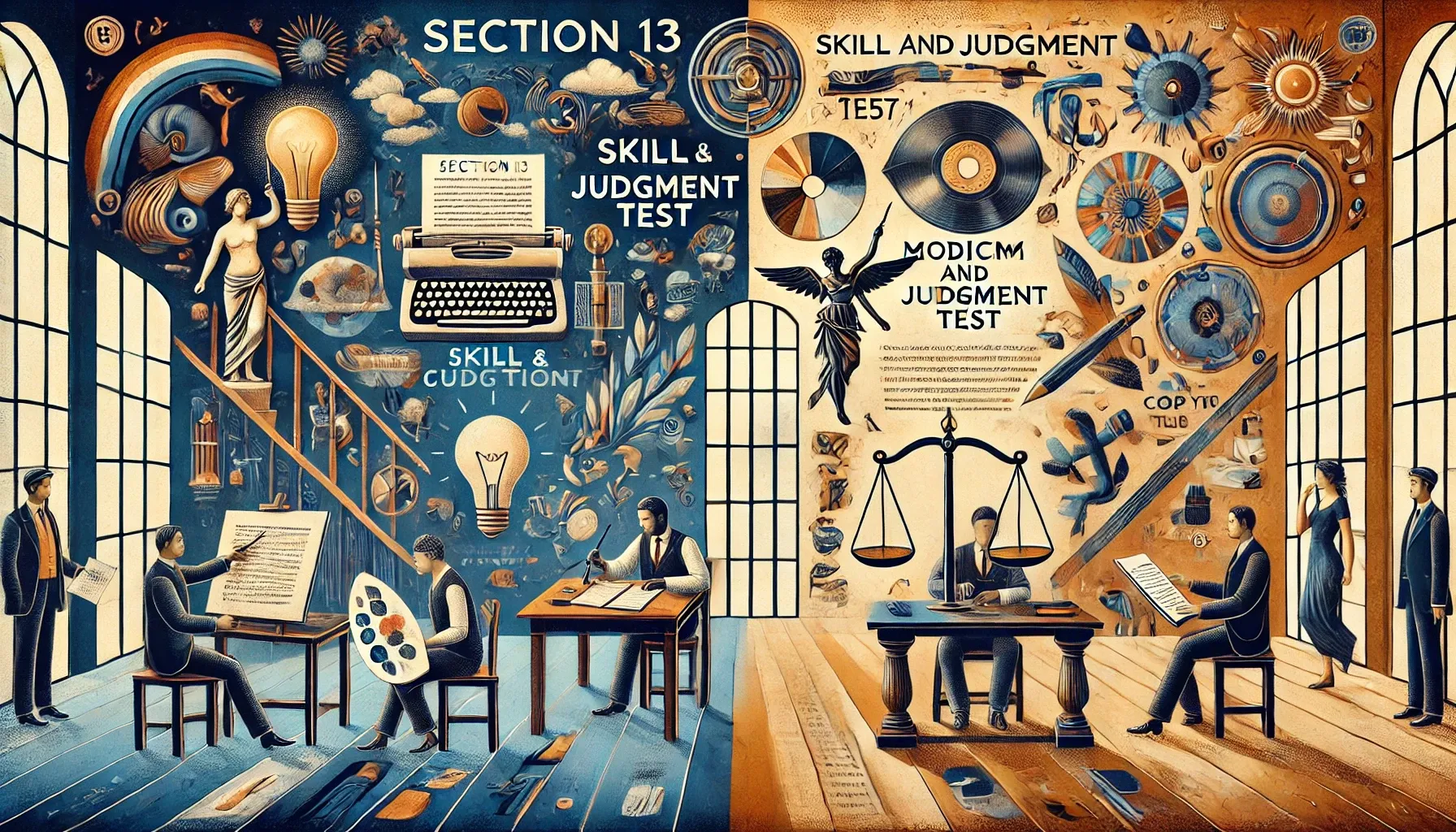Originality is fundamental to copyright law, ensuring protection for creative works. Courts assess originality through various tests, such as the "sweat of the brow" doctrine, the "modicum of creativity" test, and the "skill and judgment" test, balancing effort and creativity.

Introduction
Originality is the cornerstone of copyright law. The very essence of copyright protection hinges upon the originality of the work, distinguishing it from mere reproductions or imitations. As articulated in various legal frameworks and judgments, originality ensures the recognition and reward of intellectual and creative endeavours. This principle not only safeguards the creator’s rights but also fosters an environment conducive to innovation and creativity. Courts worldwide, including in India, have developed nuanced tests to assess originality, making it imperative to study the judicial responses that have shaped the concept under copyright law.
Under Section 13 of the Copyright Act, 1957[1], copyright subsists in original literary, dramatic, musical, and artistic works, as well as cinematographic films and sound recordings. The Act does not define "originality," leaving it to judicial interpretation. Section 2(o)[2] defines "literary work" broadly, encompassing compilations and computer databases, provided they meet the originality standard.
Originality as a Precondition to Copyright
"The sine qua non of copyright is originality." This statement succinctly encapsulates the centrality of originality in copyright law. A work, to be granted copyright protection, must be original and not a mere copy of an existing one. The rationale lies in rewarding the creator's effort, skill, and intellect while promoting further creative pursuits. However, copyright law does not extend to ideas or subject matter itself but only to the expression of those ideas. This distinction was emphatically established in R.G. Anand v. Delux Films & Others[3], where the Supreme Court of India clarified that copyright subsists in the arrangement and expression of an idea, not in the idea itself.
Indian copyright jurisprudence does not require novelty in the expression but mandates that the work must not be copied. It should be an independent creation by the author, as reiterated in several judgments. Yet, the standards of originality remain a matter of judicial interpretation, with courts employing varied tests over time.
Tests of Originality: Evolution through Judicial Pronouncements
1. Sweat of the Brow Doctrine
The "sweat of the brow" doctrine, originating in the U.K., focuses on the labor, skill, and effort invested in creating a work. This approach de-emphasizes creativity, granting copyright protection to works merely because substantial time and effort were expended.
The principle was first laid down in University of London Press Ltd. v. University Tutorial Press Ltd.[4], where the court emphasized that originality lies in the independent application of labor, skill, and judgment. This approach was later affirmed by the Privy Council in Macmillan & Company Ltd. v. Cooper[5], and subsequently followed in India.
The Indian judiciary adopted this doctrine in early cases, such as Burlington Home Shopping v. Rajnish Chibber[6], where the court upheld the copyright in compilations, considering the labor and skill involved.
2. Modicum of Creativity Test
The "modicum of creativity" test emerged as a more refined standard in the U.S., particularly in Feist Publications Inc. v. Rural Telephone Service Co.[7]. This test mandates that for a work to qualify as original, it must involve some minimal degree of creativity beyond mere effort or skill. The U.S. Supreme Court rejected the sweat of the brow doctrine, asserting that copyright is not a reward for industrious collection but for intellectual creativity.
The Indian judiciary gradually moved towards this approach, notably in Eastern Book Company v. D.B. Modak[8]. Here, the Supreme Court rejected the sweat of the brow doctrine, emphasizing creativity over mere labor. The court clarified that copyright protection requires a higher threshold, incorporating elements of intellectual effort and creativity.
3. Skill and Judgment Test
The skill and judgment test occupies a middle ground, requiring the exercise of skill and judgment to create a work but not necessarily involving significant creativity. This test has become a hallmark of the Indian approach, balancing the extremes of the U.K. and U.S. doctrines.
In Eastern Book Company v. D.B. Modak[9], the court adopted this test, holding that for a work to be original, it must originate from the author, involve the exercise of skill and judgment, and not be a mere mechanical reproduction. The Canadian decision in CCH Canadian v. Law Society of Upper Canada[10] influenced this approach, providing a workable standard that Indian courts have since embraced.
Legislative Perspective on Originality
The Copyright Act, 1957, while not explicitly defining originality, incorporates the concept implicitly. The Act aligns with international frameworks such as the Berne Convention for the Protection of Literary and Artistic Works, which also recognizes originality as a prerequisite for copyright.
The Act does not prescribe a specific test for originality, allowing the judiciary to interpret the standard contextually. This flexibility enables Indian courts to adapt global principles, such as the "modicum of creativity" test, while balancing the rights of creators and the public.
Indian courts have developed a nuanced approach to originality through various rulings, incorporating international perspectives while adapting to local contexts. The guiding principle has been that originality requires the work to originate from the author, reflecting an independent application of skill and judgment.
Challenges and Critiques
The lack of a statutory definition of originality poses challenges in consistent application. Critics argue that varying judicial interpretations create ambiguity, particularly for creators seeking to determine the eligibility of their work for copyright protection.
Additionally, the emphasis on skill and judgment may disadvantage works that are labor-intensive but lack overt creativity, such as factual compilations. This raises concerns about equitable protection for creators across diverse domains.
Conclusion
The concept of originality in copyright law serves as the foundation for protecting intellectual property. While early Indian jurisprudence adhered to the sweat of the brow doctrine, contemporary judgments have shifted towards higher standards, incorporating creativity and intellectual effort. The adoption of the skill and judgment test reflects a balanced approach, ensuring that copyright protection is not granted to trivial or mechanical works.
Judicial responses, from R.G. Anand to Eastern Book Company and beyond, illustrate the evolving understanding of originality, aligning Indian jurisprudence with global standards. The emphasis on creativity and independent effort fosters an equitable framework, rewarding genuine intellectual contributions while encouraging innovation in various fields.
[1] The Copyright Act, 1957, s. 13.
[2] Id. at s. 2(o).
[3] AIR 1978 SC 1613.
[4] [1916] 2 Ch 601.
[5] (1924) 26 BOMLR 292.
[6] 61 (1995) DLT 6.
[7] 499 U.S. 340 (1991).
[8] AIR 2008 SC 809.
[9] Ibid.
[10] 2004 (1) SCR 339 (Canada).


